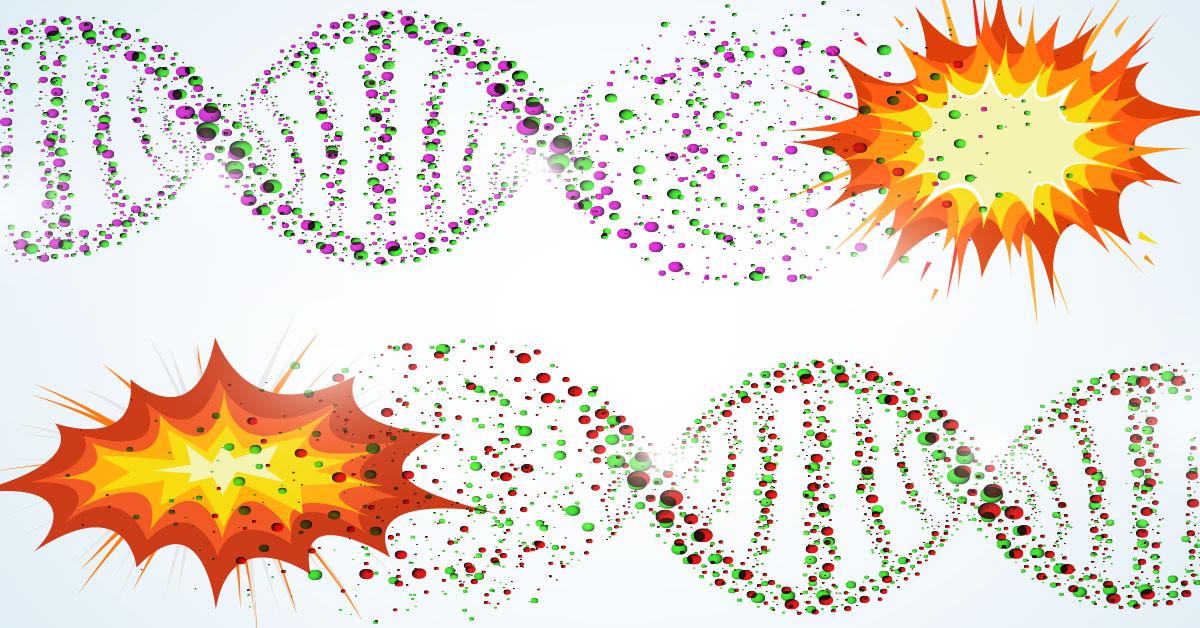
Much of the damage would have been missed by analyses conducted till now. Report: Claire Robinson
New research from Chinese scientists shows that CRISPR/Cas9 gene editing causes massive damage to the genome, much of which would have been missed by the analytical tools used so far.
Source… https://www.gmwatch.org/en/news/latest-news/19732-new-analytical-tool-reveals-massive-dna-damage-caused-by-crispr-cas9-gene-editing
In a previous study, the same authors described a novel DNA sequencing procedure, which they called a “primer-extension-mediated sequencing assay” or PEM-seq. By applying this procedure, they found that DNA double-strand breaks (DSBs) brought about by the CRISPR/Cas9 gene-editing tool could lead to unintended chromosomal translocations and large deletions.
In their latest follow-up report, the researchers describe a new computer program, which enabled them to analyse the PEM-seq data to greater depth than previous programs had allowed. They used this program to analyse real sequence data from their own new experiments, as well as previous ones, following CRISPR/Cas9 gene editing in mouse and human cells.
In gene editing, while the initial double-strand break made by the DNA “scissors” or gene-editing tool can be targeted to a given location, the subsequent DNA repair that makes the “edit” is performed by the cell’s own repair mechanisms and is not controllable or precise. The researchers analysed the outcomes of the gene edit – and found what they call “tremendous deleterious DSB repair byproducts of CRISPR/Cas9 editing”.
The unintended outcomes or genetic errors ranged from unintended small insertions or deletions (indels) to large deletions, plasmid (gene-editing tool delivery vehicle) integrations, and chromosomal translocations.
The researchers wrote, “Our findings provide an extra dimension for genome editing safety besides off-targets” – the well documented unintentional DNA damage at locations of the genome that were not targeted for editing. They added, “Caution should be exercised to avoid not only off-target damages but also deleterious DSB repair byproducts during genome editing.”
Worryingly, these unintended deleterious outcomes of gene editing were not overcome even when a high-fidelity CRISPR/Cas tool was used. Furthermore, when components of the DNA repair machinery were inhibited in an attempt to force a specific gene sequence modification outcome (known as SDN-2), this resulted in large deletions, large insertions, and DNA cuts around the start site of genes.
Collectively, these findings graphically highlight just how little control the gene editor has over the DNA repair processes and its outcomes, following the formation of the DSB by the CRISPR/Cas gene-editing tool.
Relevance to plant gene editing
How are the findings of the study relevant to plant gene editing? London-based molecular geneticist Dr Michael Antoniou explained, “The mechanisms of gene editing and the subsequent DNA repair processes are the same in animal and plant cells. Given that fact, the implications of the new research are clear. The genome sequencing analysis conducted by the scientists shows that all analyses of gene-edited plants done thus far need to be re-evaluated with this new tool to get a more complete picture of the DNA damage arising from gene editing.”
Dr Antoniou and GMWatch have said previously that long range PCR and whole genome long-read DNA sequencing must be applied to gene-edited plants and other organisms. Dr Antoniou commented that the new tool does not replace those analyses, but adds to them: “This latest study adds another invaluable tool allowing a greater depth of analysis of raw DNA sequence data, so that you see a more complete spectrum of outcomes, both on-target (at the intended edit site) and off-target (at other locations in the genome).”
Dr Antoniou added, “This new tool is a major step forward. It is important that it gets widely adopted and used – not just within a medical gene therapy context, as the authors of the new study suggest, but also in the gene editing of crops and animals.”
The new research is described in a pre-print published on bioRxiv and has not yet been peer reviewed.
—
Global detection of DNA repair outcomes induced by CRISPR-Cas9
Mengzhu Liu, Weiwei Zhang, Changchang Xin, Jianhang Yin, Yafang Shang, Chen Ai, Jiaxin Li, Fei-long Meng, View ORCID ProfileJiazhi Hu
bioRxiv, 16 Feb 2021
doi: https://doi.org/10.1101/2021.02.15.431335
https://www.biorxiv.org/content/10.1101/2021.02.15.431335v1
Abstract
CRISPR-Cas9 generates double-stranded DNA breaks (DSBs) to activate cellular DNA repair pathways for genome editing. The repair of DSBs leads to small insertions or deletions (indels) and other complex byproducts, including large deletions and chromosomal translocations. Indels are well understood to disrupt target genes, while the other deleterious byproducts remain elusive. We developed a new in silico analysis pipeline for the previously described primer-extension-mediated sequencing assay to comprehensively characterize CRISPR-Cas9-induced DSB repair outcomes in human or mouse cells. We identified tremendous deleterious DSB repair byproducts of CRISPR-Cas9 editing, including large deletions, plasmid integrations, and chromosomal translocations. We further elucidated the important roles of microhomology, chromosomal interaction, recurrent DSBs, and DSB repair pathways in the generation of these byproducts. Our findings provide an extra dimension for genome editing safety besides off-targets. And caution should be exercised to avoid not only off-target damages but also deleterious DSB repair byproducts during genome editing.